State
Tribe Name
Art Type
short description
Bhavada or Bohada" is a well-known festival of the Mahadev Koli, Kokana, Thakur tribals residing on the slopes of the Eastern Western Ghats in Sahyadri. Bohada dance form holds religious importance for these tribals.
Wearing various kinds of masks is an extremely ancient form of dancing among tribals. In ancient times, tribals used to put on the hide of a tiger over a kill and carry those to village deity while dancing along the way. This practice is still followed in some tribes today. For e.g. tribals put on the same masks of different characters from their folklore like Veera, Suplya, Dukrya, Baliram, Bawari, Chandan Hira etc. and present their stories through the dance-drama.
Bohda is an extremely ancient dance tradition. This dance is a dance tradition that has been nurtured for the last 200 years. The articulate artists with hard-built strong physique lose their body consciousness and devotees dance in faith in this festival. His devotion is present in all the places of Gods and Goddesses.
Wearing various kinds of masks is an extremely ancient form of dancing among tribals. In ancient times, tribals used to put on the hide of a tiger over a kill and carry those to village deity while dancing along the way. This practice is still followed in some tribes today. For e.g. tribals put on the same masks of different characters from their folklore like Veera, Suplya, Dukrya, Baliram, Bawari, Chandan Hira etc. and present their stories through the dance-drama.
Bohda is an extremely ancient dance tradition. This dance is a dance tradition that has been nurtured for the last 200 years. The articulate artists with hard-built strong physique lose their body consciousness and devotees dance in faith in this festival. His devotion is present in all the places of Gods and Goddesses.
Thumbnail
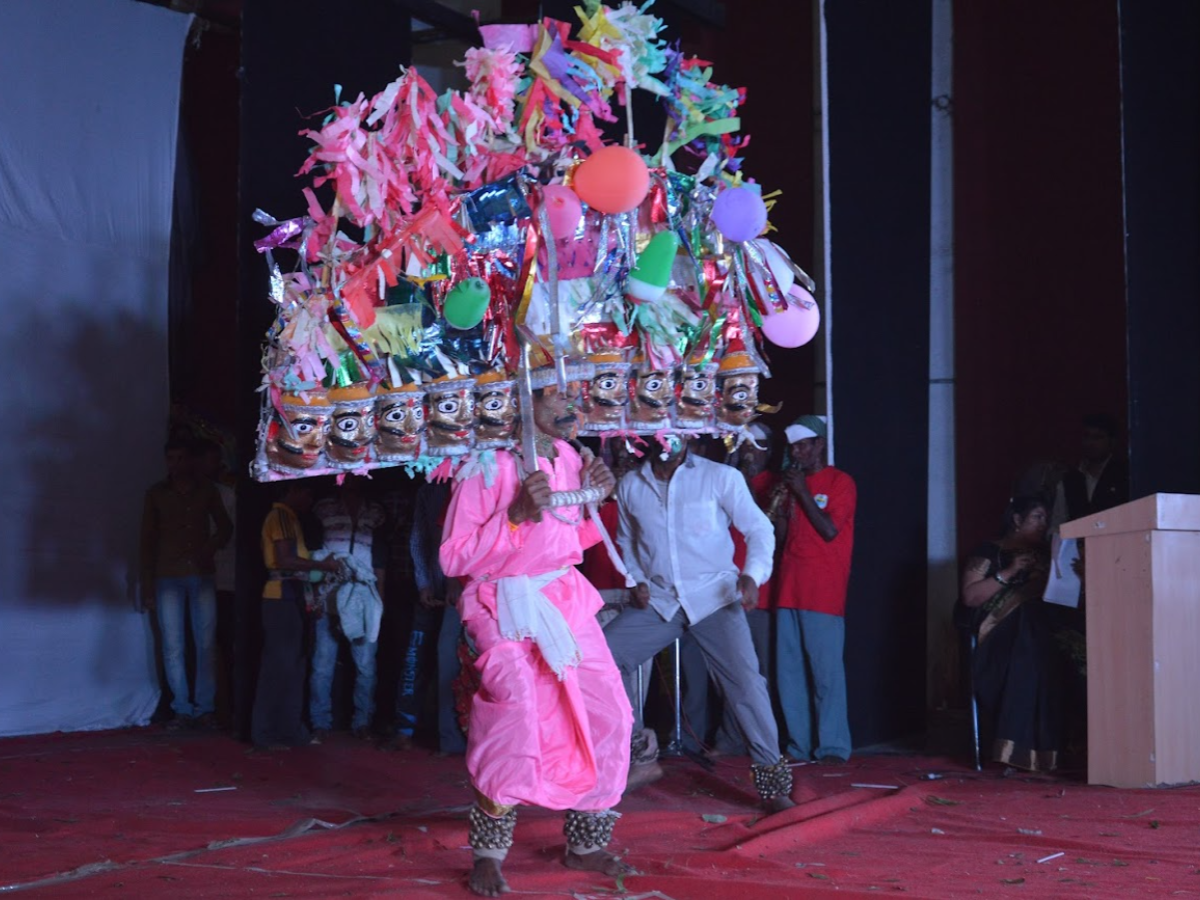
Filter Postion
Right
Filter Background
Off
Theme
Filter Header Image

content
Image
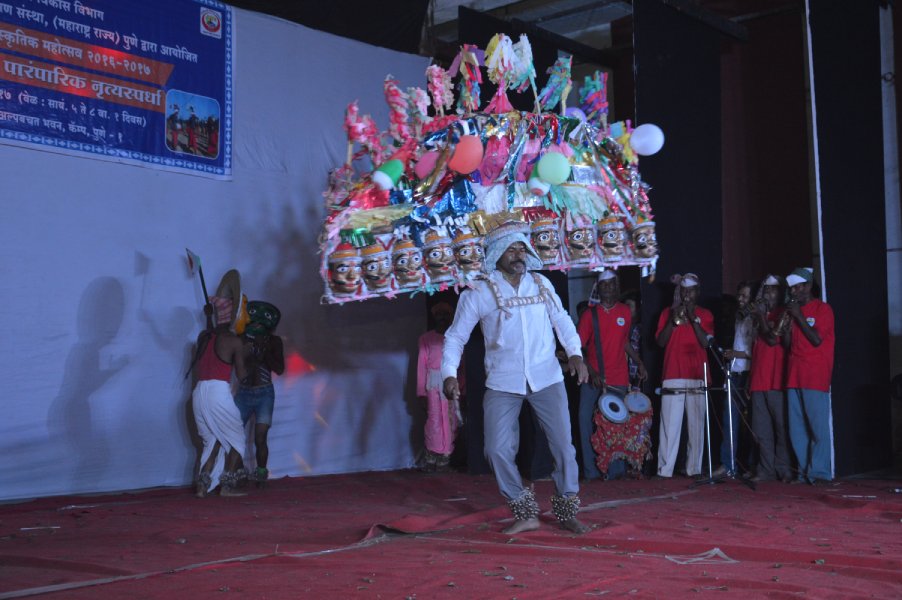
description
Bhavada or Bohada" is a well-known festival of the Mahadev Koli, Kokana, Thakur tribals residing on the slopes of the Eastern Western Ghats in Sahyadri. Bohada dance form holds religious importance for these tribals.
Wearing various kinds of masks is an extremely ancient form of dancing among tribals. In ancient times, tribals used to put on the hide of a tiger over a kill and carry those to village deity while dancing along the way. This practice is still followed in some tribes today. For e.g. tribals put on the same masks of different characters from their folklore like Veera, Suplya, Dukrya, Baliram, Bawari, Chandan Hira etc. and present their stories through the dance-drama.
Bohda is an extremely ancient dance tradition. This dance is a dance tradition that has been nurtured for the last 200 years. The articulate artists with hard-built strong physique lose their body consciousness and devotees dance in faith in this festival. His devotion is present in all the places of Gods and Goddesses.
Wearing various kinds of masks is an extremely ancient form of dancing among tribals. In ancient times, tribals used to put on the hide of a tiger over a kill and carry those to village deity while dancing along the way. This practice is still followed in some tribes today. For e.g. tribals put on the same masks of different characters from their folklore like Veera, Suplya, Dukrya, Baliram, Bawari, Chandan Hira etc. and present their stories through the dance-drama.
Bohda is an extremely ancient dance tradition. This dance is a dance tradition that has been nurtured for the last 200 years. The articulate artists with hard-built strong physique lose their body consciousness and devotees dance in faith in this festival. His devotion is present in all the places of Gods and Goddesses.
Image Mode
landscape
Image

description
This dance drama is enacted by adopting Songa, a type of pretended look (impostors look of characters from myths and folk lore) by the artistes by making use of music, songs and the usage of masks. Since it is woven around a religious story, it is performed by dedicating a particular position to the triumph of falsehood and truth.
Owing to the interaction and exposure with Hindu customs through the years, the epics Ramayana and Mahabharata have inadvertently shaped the tribal dances. In these instances, individuals put on masks which are appropriate for the Hindu customs. Narada-Valya Koli, Rama-Ravana War, Vali-Bhima War, Rama-Sugriva War, Tratika-Bakasura War, Dasharatha-Shravan Bala War, Rama-Marich War etc tales make an appearance with their appropriate masks along with the traditional masks.
And if Mahishasur Vadh Katha is selected for the dance-drama, then Tuesday is particularly selected as the closing day. During this day, at sunrise, from one side of the village a bullock-cart procession is taken out with dancing, playing music, and spilling of Kumkum in the air; while from the other side, dancing, playing music on dhol, Sanai, and other traditional instruments, Mhasoba procession is taken out.
The fight of Mhasoba and Devi occurs at a predetermined location in the village or in front of the temple.
All the villagers observe this fight with fervor and devotion.
At the peak of this narration in Bhawada, Mata Bhavani finally wins.
Sin is defeated and immortality wins. Following this triumph, there a goat is sacrificed there in celebration. Its meat is shared from home to home in the village. Later the goddess is worshipped alternately in each home of the village. Bohda usually begins on Chaitra Purnima and continues until monsoon. It is the time of village community fairs. At that time, Bohadya starts with a visit to the village and greeting the village deities.
Owing to the interaction and exposure with Hindu customs through the years, the epics Ramayana and Mahabharata have inadvertently shaped the tribal dances. In these instances, individuals put on masks which are appropriate for the Hindu customs. Narada-Valya Koli, Rama-Ravana War, Vali-Bhima War, Rama-Sugriva War, Tratika-Bakasura War, Dasharatha-Shravan Bala War, Rama-Marich War etc tales make an appearance with their appropriate masks along with the traditional masks.
And if Mahishasur Vadh Katha is selected for the dance-drama, then Tuesday is particularly selected as the closing day. During this day, at sunrise, from one side of the village a bullock-cart procession is taken out with dancing, playing music, and spilling of Kumkum in the air; while from the other side, dancing, playing music on dhol, Sanai, and other traditional instruments, Mhasoba procession is taken out.
The fight of Mhasoba and Devi occurs at a predetermined location in the village or in front of the temple.
All the villagers observe this fight with fervor and devotion.
At the peak of this narration in Bhawada, Mata Bhavani finally wins.
Sin is defeated and immortality wins. Following this triumph, there a goat is sacrificed there in celebration. Its meat is shared from home to home in the village. Later the goddess is worshipped alternately in each home of the village. Bohda usually begins on Chaitra Purnima and continues until monsoon. It is the time of village community fairs. At that time, Bohadya starts with a visit to the village and greeting the village deities.
Image Mode
landscape
Image
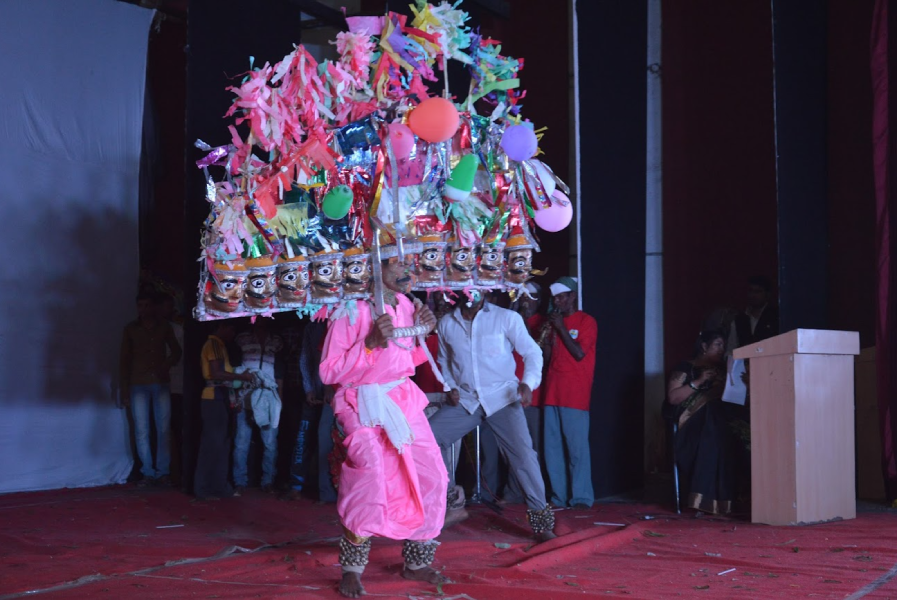
description
Extensive preparation is made prior to performing Bohada. In the village, the Bohada decision or consideration must first be made. After the decision is agreed to by all the hamlets who are going to participate in it, collection of contribution starts. The contribution between five rupees to twenty rupees, is collected from door to door. Subscriptions are not made from outsiders (individuals who do not belong to the specific tribe). But all are welcome to witness the program/ dance-drama performance. Responsibilities and honors are attached to specific families based on their social status in the tribe. If it is resolved to introduce a new Songa (new story or new appearance of a character with mask) in Bohodya, it is accomplished with reverence and adoration. Their religion and devotion are observed at every step.
Image Mode
landscape
Image
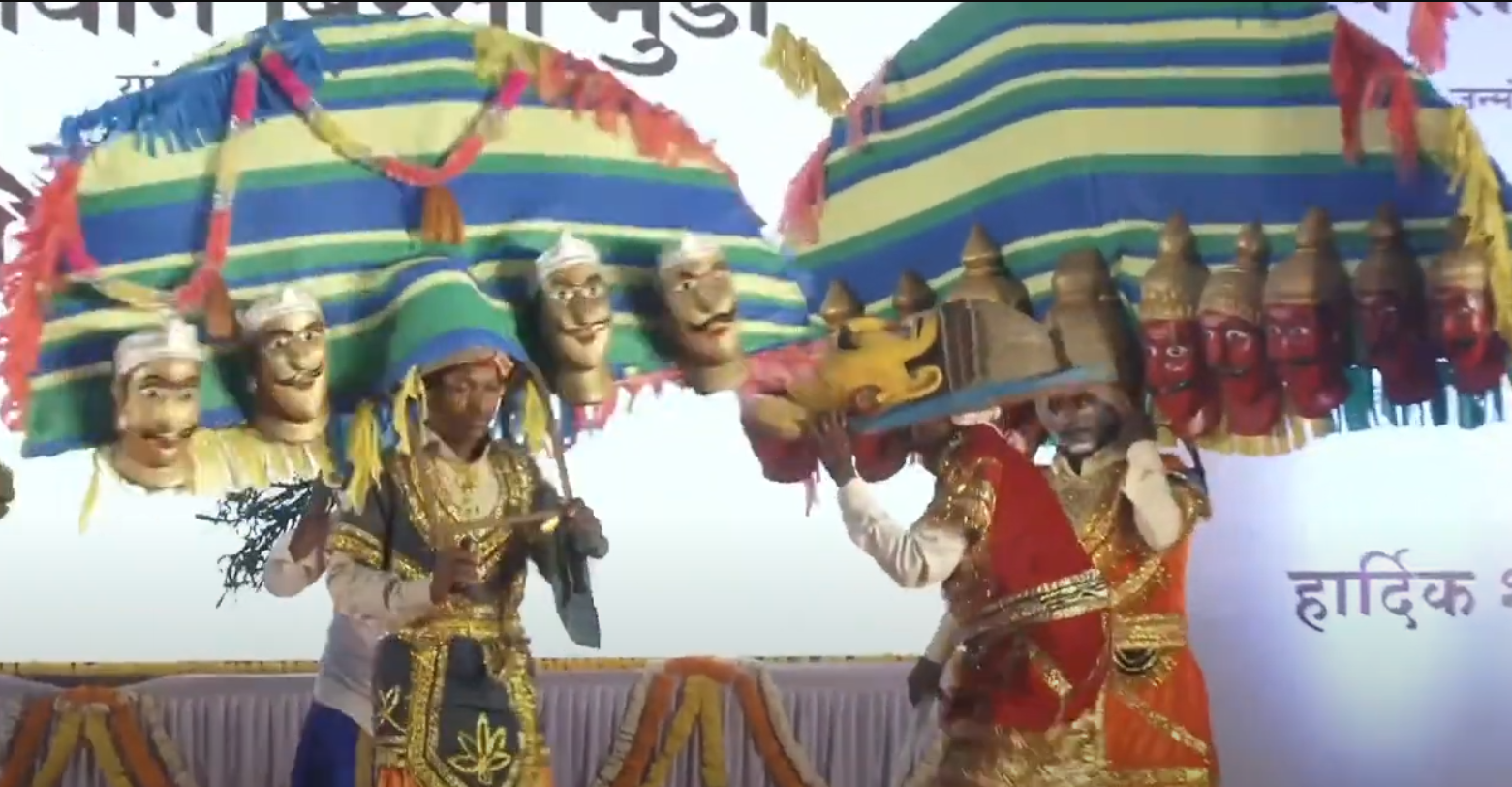
description
Typically 25 to 30 artistes perform in the Bhawada. This is only for male artists. They dress in short dhoti tied around both legs. Programs are initiated based on the gate of Gaondevi. Songas or masks are introduced with respect. It is also the prestige of some. Except Songa, other artists wear a yellow handkerchief on the head in a special manner. A yellow girdle wrapped around the waist. There are approximately 100 masks in the bohda. They each typically weigh between 1 to 10 kg. It contains some heavy and large masks. Ahiravan, Mahiravan, Dundubhi, Vetal, Nrisimha's masks are heavy.
Image Mode
landscape
Image
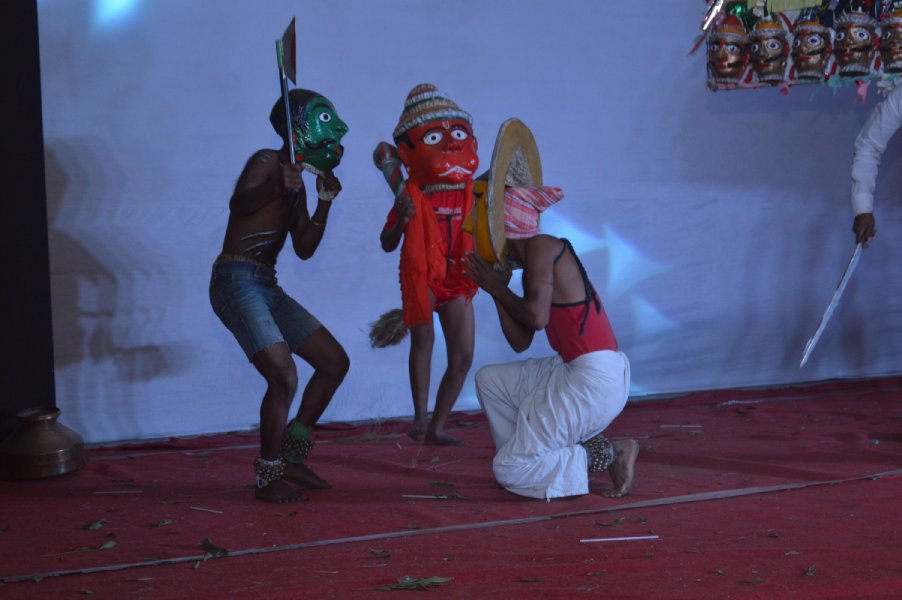
description
Chaal contains 5 large ghungaroo sticks. Here these sticks are Protective Guard.
Big drums (mandol), sambal and tarpa with peacock feathers as ornaments are key music instruments whereas pavari plays to the music. The dancers dance intensely in rhythm to the music of their folk song and ringing of bells from thumping of chaal on the ground, twisting into different appealing postures like circle, long circle, semi-circle, whirling, sitting. They do not consider for whom they are dancing and that there is someone who is observing their dance. They dance for the grace of God as a way of living. Observing the dances of different traditional forms overwhelms the eyes as well as the mind of the observer.
Big drums (mandol), sambal and tarpa with peacock feathers as ornaments are key music instruments whereas pavari plays to the music. The dancers dance intensely in rhythm to the music of their folk song and ringing of bells from thumping of chaal on the ground, twisting into different appealing postures like circle, long circle, semi-circle, whirling, sitting. They do not consider for whom they are dancing and that there is someone who is observing their dance. They dance for the grace of God as a way of living. Observing the dances of different traditional forms overwhelms the eyes as well as the mind of the observer.
Image Mode
landscape
promoted
Off
Verified
On
